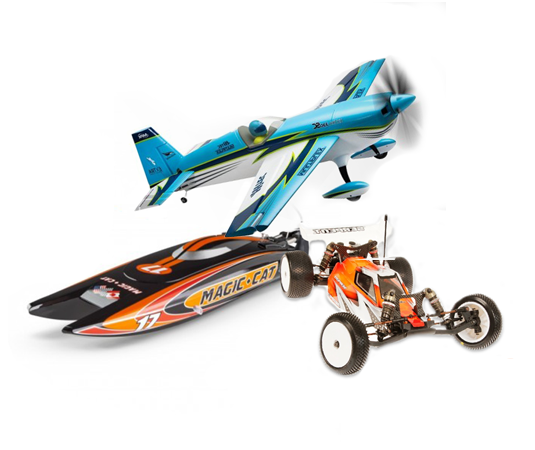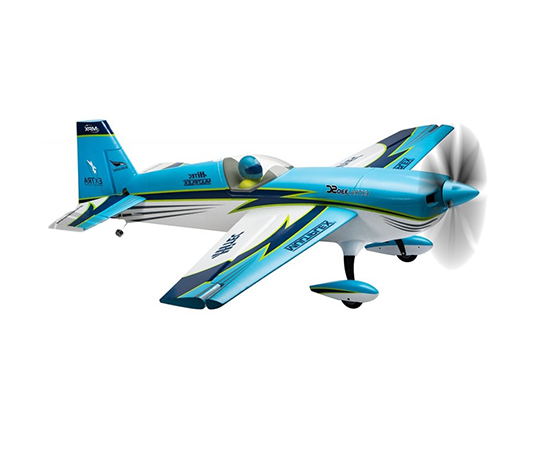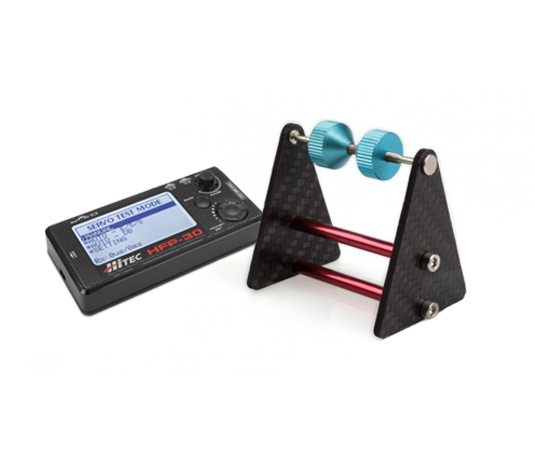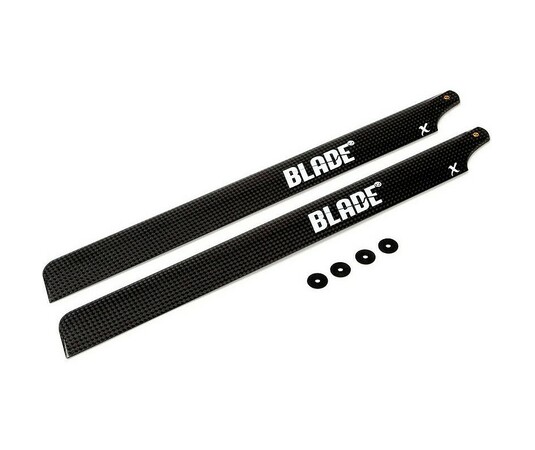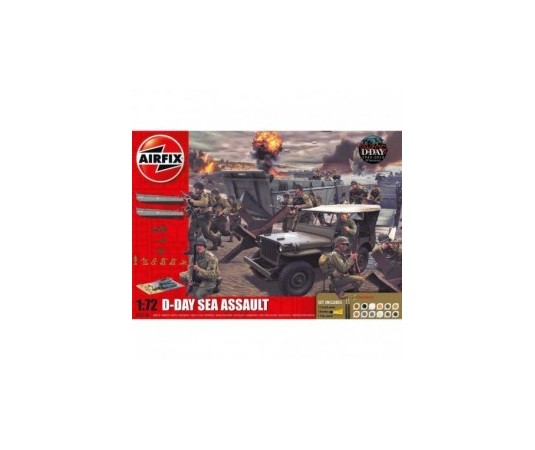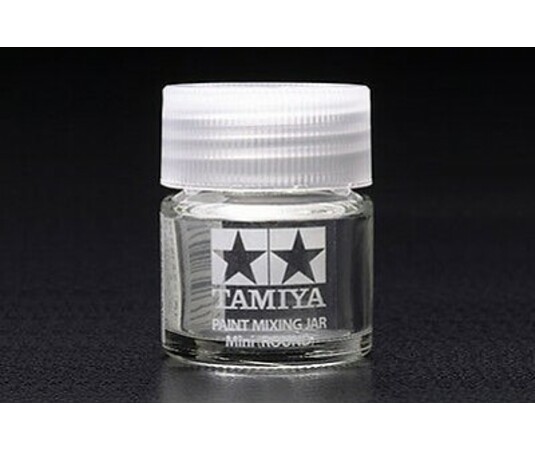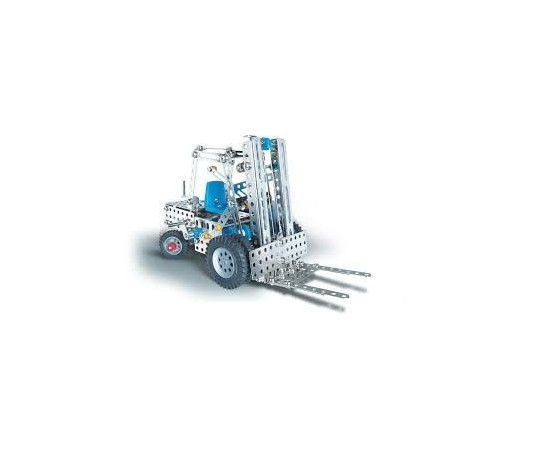TORRO tank PRO 1/16 RC Tiger I late version desert version camouflage - BB - barrel smoke

Express delivery

Large selection of carriers

Satisfaction guarantee
Panzerkampfwagen VI Tiger (also PzKpfw VI, Tiger I ausf.H or SdKfz 181) was a German heavy tank developed during World War II, which was deployed in 1942 in Africa and Europe, usually in independent heavy tank battalions. Its final designation Panzerkampfwagen VI Tiger Ausf. E often shortened to Tiger. Tiger I provided the German army with the first armored combat vehicle with an 8.8 cm KwK 36 cannon (derived from the 8.8 cm Flak 36 cannon). It was manufactured from August 1942 to August 1944 and a total of about 1,347 machines were created. After August 1944, the production of Tiger I was gradually terminated in favor of the Tiger II tank.
While Tiger I was once considered an excellent design, it was recombined using expensive materials and labor-intensive production methods. It was also prone to certain types of failures and chassis failures and its range was limited by high fuel consumption. Maintenance was expensive but generally mechanically reliable. It was difficult to transport, and in muddy weather it threatened its immobility, while in winter it threatened to freeze ice and snow between the interlaced Schachtellaufwerk-type wheels, causing it to get stuck. This was a problem on the Eastern Front in the muddy period of rasputice or extreme cold.
He was nicknamed the "Tiger" tank by Ferdinand Porsche, and a Roman numeral was added after Tiger II entered production. The original designation was Panzerkampfwagen VI Ausführung H (literally "armored combat vehicle / vehicle VI version H", abbreviated PzKpfw VI Ausf. H), where "H" referred to Henschel as the designer and manufacturer. In the inventory of armaments was classified as Sd.Kfz. 182. Later in March 1943 he was again designated as PzKpfw VI Ausf. E and in the inventory kept as Sd.Kfz. 181.
Only seven Tiger I tanks currently survive in museums and private collections around the world. The Tiger 131 in the British Tank Museum, which was acquired during the fighting in North Africa, is currently the only operational one.
After losing World War I, Germany was bound by the Treaty of Versailles, according to which it was not allowed to manufacture and own weapons of many types, which of course included tanks. Nevertheless, he managed to secretly perform tests with tanks, whose working names were Leicht Traktor, Grosstraktor or Neubaufahrzeug.
After Hitler came to power, Germany terminated the treaty [source?] And gradually began the development and production of new machines. In 1937, Henschel won a contract to build a prototype DW1 heavy tank, but Henschel began work on the development of a much larger vehicle - a 65-ton VK 6501. Daimler-Benz, MAN and Porsche also submitted their bids, so prototypes of the VK 3001, VK tanks appeared. 3601 and VK 4501. On November 20, 1941, German engineers had the opportunity to examine the captured T-34 tank intact, which caused them and military officials to be horrified. The VK 3001/3601 project was interrupted and all available funds were concentrated on the development of a heavier tank that would surpass the Soviet T-34.
On Hitler's birthday, April 20, 1942, Henschel and Porsche presented ready-made prototypes of the VK 4501 machines, which were named PzKpfw VI. Tiger. It was decided that these tanks will be manufactured by the favored company Henschel. The unfinished 90 pieces of the Porsche Tiger (the vast majority without the turret, which was uniformly manufactured by Krupp) became the basis for the Ferdinand / Elefant tank destroyer.
The Tank Tiger was the first combat vehicle of its kind since World War I, whose design was based on real combat experience, leaving aside a somewhat misleading lesson of the Spanish Civil War. Its total weight was almost double the weight of the early T-34 / 76A. Its design was not only to ensure superiority over this Soviet machine, but to go one step further. With its level of crew protection and firepower, the tank significantly surpassed all vehicles constructed so far. On the other hand, the enormous size of the tank, the production complexity, the heavy weight and the resulting acquisition costs meant that the tank could never be more than an occasional player on the battlefield.
Massive armor and destructive firepower are two qualities that the Tiger tank is rightly attributed to. Nevertheless, these are just two of a number of factors that determine the effectiveness of the tank in combat. German engineers put a lot of care into the strength of the armor, but the construction was relatively poor, because there were almost no sloping surfaces. All exposed vertical and almost vertical surfaces - the lower and upper part of the frontal armor, the sides of the tower and the rear of the hull, which had the same inclination as the upper frontal armor (81 °) - had a maximum thickness of 100 mm. The most exposed area, the front of the tower, was 120 mm thick and most of its area was reinforced by the armored cover of the base of the cannon. However, if, for example, the frontal armor had an inclination of 35 degrees, a 60 mm thick steel plate would provide the crew with the same protection as the 100 mm thick vertical armor of the Tiger. The tank could thus gain weight savings in favor of its mobility. The weakness was also initially a relatively weak 25 mm armor on the ceiling of the tower and hull. The Tigers became a popular target for British Hawker Typhoon aircraft, American P-51 Mustangs or Soviet Ilyushin Il-2 fighters, to which the Germans responded in mid-1944 by increasing the thickness of the tower ceiling to 45 mm.
The original main armament was to form a 75 mm L / 70 KwK42 cannon [5], but Hitler enforced the assembly of the 8.8 cm L / 56 KwK36 cannon, whose missiles had a paradoxically lower armor penetration than the smaller cannon. For comparison: anti-tank missile Pzgr.39 caliber 75 mm could pierce 110 mm thick armor (Pzgr.40 with tungsten core was able to pierce up to 150 mm armor) with a slope of 30 ° at a distance of 1000 m. However, the weapon used, despite the larger caliber of 8.8 cm, pierced 100mm and 138mm armor under the same conditions. However, the penetration of this missile into the enemy machine almost always meant the death of the crew and the destruction of the machine, and even if it did not, it often happened that he simply tore the enemy tank from the curtain. The difference in performance was due to the speed of the shots. For a longer 75 mm cannon, the muzzle velocity of the projectile was 925 m / s, respectively. 1120 m / s for the above-mentioned types of missiles, compared to 773 m / s and 930 m / s in the case of 8.8 cm KwK36. Traditionally, the optics in which Nazi Germany was at the top of the world was good.
A hydraulic and - in the event of a failure - manual mechanism was used to turn the tower, but it was complex and very slow, the hydraulic control was inaccurate. A report prepared [5] by British officers after the end of the war states, among other things, that "the shooter's workplace has significant shortcomings, is very cramped, the elements for controlling the cannon are unsuitable in shape and are misplaced. The means of aiming are not adequate, only the charger has the appropriate conditions for its work. ”The report also criticizes the workplace of the radio operator, the car commander and the driver. The radio operator-shooter controlled the machine gun MG 34 caliber 7.92 mm using a pistol grip and upholstered headrest on the supporting structure. According to the British report, "this head restraint kept falling on the shooter's head and caused him unbearable discomfort."
The tank was powered by a Maybach HL210 engine with an output of 642 hp, later a Maybach HL 230 with an output of 52 hp higher. The engines of this de facto monopoly German manufacturer were excellent in themselves, but they could hardly operate in a tank whose actual weight exceeded the value specified by the technical conditions by 25%. The engine had to operate in combat conditions often at full power, which led to its overheating. As soon as the operating temperature exceeded 95 ° C, coolant penetrated into the lubrication circuit. The top speed of the tank at the maximum allowed engine speed was 38 km / h, which was 3 km / h less than the M4 Sherman tank and even 18 km / h less than the T-34/85. In any case, the engine had a huge fuel consumption, although its exact quantification is the subject of controversy. If, for example, the T-34 consumed 1.84-2.5 liters of diesel per km when driving off-road, then its consumption was 7.8-10 liters of gasoline per km.
The captured German soldiers stunned the Allied soldiers by claiming that a full tank (567 l) was seldom enough for more than 2.5 hours of field operations. An analogous situation, as with the engine, was with an otherwise excellent hydraulically operated transmission. Although it was easy to use and gained great popularity with tank drivers. It was even possible to set eight forward speeds and four reverse speeds on the selector. However, complex transmissions and steering had to be given careful care, which was difficult in combat conditions. From the interrogations of captured German soldiers, it is clear that the failure of the transmission and steering was the most common reason for the exclusion of the tank from further activities.
The tank also had a pretty good chassis with offset wheels and 725 mm belts. However, this system ran into an unforeseen problem - in harsh climatic conditions, the temporarily shut down tanks froze mud and slush between the wheels, which prevented their further movement. Deposits of dirt and stones between the wheels caused the belt to come off the sprocket or to jam firmly. Similar problems also occurred when reversing or turning in swampy terrain. Immobile tanks became easy prey for the enemy. Even the movement in the conditions of the Eastern Front was for the Tigers, whose specific load was 1.04 kg / cm2, quite a significant weakness, which the crews of Soviet tanks learned to use. Another complication was the exchange of narrow belts for transport by rail for wide combat / i>
Tiger tanks were first deployed in the fighting in September 1942 on the Eastern Front in the Leningrad region in the number of 3 pieces, but without much effect (all three fell and managed to save only one, the remaining two were destroyed before the Soviets). [5] Some machines crashed into the muddy terrain, others suffered mechanical defects. The only plus was the fact that none of the anti-tank weapons pierced the tank's armor, although there was several damage to the cannon by Soviet anti-tank missiles.
At the end of 1942, the first Tigers were sent to Tunisia to face the onslaught of the Allies. At the beginning of 1943, they took part in the fighting with relatively good results, but transmission failures, steering and problems with the wheels eliminated them more than combat clashes with the enemy.
At that time, the first American M4 Sherman tanks appeared in North Africa, which were not enough for the Tigers, but which had a gradually increasing numerical superiority. The Western Allies, like the Soviets, decided to follow the path of producing medium-sized medium tanks. On January 16, 1943, Soviet troops managed to capture an undamaged Tiger tank, which was even the company commander's car. Otherwise, the tanks had in their arsenal a liquidation grenade, which was a charge to destroy the barrel - the German die Rohrzerstöhrladung. If the tank became immobile and threatened to fall into the hands of the enemy, the charger put the charge in the barrel and activated it. [Source?] In May of the same year, the Red Army had all the important information about the strengths and weaknesses of this armor and could begin to implement the appropriate countermeasures. At this time, more and more Tigers began to arrive on the Eastern Front and the first results began to appear / i>
The crews were very successful in the fighting near Kharkov in the spring of 1943. Among the German soldiers appeared a variety of tankers (tank aces), who used their machines to destroy dozens of enemy tanks and combat vehicles. However, it should be noted that there were a relatively small number of such top crews. With the growing combat activity of the Tigers, their losses began to occur, which were caused by mines, hits, terrain obstacles and mechanical failures. At the beginning of July 1943, the Battle of Kursk erupted, during which the Germans destroyed more Soviet tanks than they lost, but unlike the enemy, the losses could not fully compensate. In this battle, it turned out that the Tiger tank, due to its cumbersomeness and considerable fuel consumption, has a low ability to lead offensive combat associated with a frequent change of firing position. Therefore, he was pushed into the defensive fight, which, paradoxically, was well suited.
In July, a company of heavy tanks was relocated to Sicily, but the result was a serious and completely unnecessary loss of the Tigers. Some sank in the field, others remained standing due to a mechanical failure. During the evacuation from Sicily, the Germans were left with only one tank out of the original seventeen. Of the other battles in Italy, the battle of Monte Cassino is worth mentioning, where the Germans lost fifteen of their sixteen Tigers in 48 hours. During 1943, Tiger underwent a few changes in armor strength, better optics, and wheels. The "Zimmerit" paste began to be applied to the armor, which was supposed to prevent the attachment of magnetic mines.
When the Allies invaded Normandy in 1944, the Germans had a total of four Tiger tanks there. There were also five Königstigers, but they were so unreliable that they were sent to Germany so as not to fall into the hands of the enemy. At the end of September 1944, the fading supply of new heavy tanks from the Kassel factory almost definitively ceased. Only 44 Tigers left the factory after the first of October. During the counterattack in the Ardennes in December 1944, the Germans had only 35 of these tanks on the Western Front. In the spring of 1945, the remaining heavy tanks moved from the Western Front to the Eastern Front. A substantial part of the German heavy tanks have been fighting against the Soviets since 1943, where they suffered heavy losses that could not be compensated. If in mid-1944 the number of usable Tigers was 670, then at the end of the year it was 316 and in February 1945 only 216 machines. The surrender of the German army in May 1945 marked the end of the Tiger tank, which became a real symbol of the German military force and which in many respects foreshadowed the development of modern tanks.
The Tiger heavy tank had serious shortcomings in some respects. It was a cumbersome giant, its engine and transmission not designed to power such a heavy vehicle. He often suffered from mechanical failures, had significant fuel consumption and limited range. The chassis with offset wheels was complicated, its proper maintenance in combat conditions almost impossible. The motor speed of the tower was too slow, not to mention manual rotation. Shooting at moving targets was difficult, the cannon lacked a stabilizer, so the tank could not conduct accurate shooting while driving. This list of defects is opposed by strong armor and a powerful cannon, which were two important factors that made the Tiger tank a feared weapon on the battlefields of World War II.
Tiger tanks were produced in a relatively small number, also its variations were not many. In addition to the basic variant SdKfz 181, the most common machines were command tanks SdKfz 267 and SdKfz 268, which were deprived of a coupled machine gun, instead of which was mounted a more powerful radio station with a larger antenna. However, due to the unmasking effect of this antenna, command cars became a popular target for cannons near them. A few Tigers were converted to Bergepanzer engineer tanks (Sd.K fz. 185). Another modification of the tank was an assault cannon caliber 38 cm Sturmtiger.
The chassis, manufactured by Porsche in 1942, became the basis for the Ferdinand tank destroyer (SdKfz 184). Ferdinand was a heavy tank destroyer, built on a Porsche chassis, which was rejected for the Tiger tank, but it was a pity to dismantle 90 pieces already produced, so it was placed a more powerful 8.8 cm cannon with a barrel length of 71 calibers. The crew was protected by very strong armor (200 mm at the front, the remaining walls 80 mm). The Elefant version was improved with the MG 34 machine gun located in the right part of the front wall and wider belts.
True to detail in 1:16 scale
Weighing around seven kilograms, the Tiger I earlier version is ideal for the discerning customer. In the professional edition, it is characterized by excellent airbrush color quality, 2.4 GHz printed circuit board technology and a new speaker. This model has excellent driving characteristics, a wide range of functions and realistic sound. High quality belts, drive and guide wheels with rollers, as well as the lower fuselage and turret are made of metal. Many small parts and various stickers perfectly complete the replica of the faithful scale.
Controls and functions
The powerful tank model has 2.4 GHz RC control. The vehicle is equipped with the BB Airosft system, so battles are possible as in real combat. Torque-optimized engines give the Tiger I a precise and smooth ride. Metal gears with robust gears and improved transmission ensure greater performance. Thanks to the proportional control, you can approach the tank very slowly and gradually increase your speed. Tiger I moves back and forth, also turning left and right. It can also be turned left or right on the spot. You can raise and lower the cannon and rotate the turret 360 degrees. The realistic experience culminates in barrel smoke and various engine sounds, including exhaust smoke.
Package contents and technical parameters / functions
- RC Tiger I late version desert version camouflage - BB - smoke from the barrel
- Torro wooden box for transport and storage
- Weight: approx. 6.8 kg
- 360 ° rotation of the tower
- 2.4 GHz remote control
- Metal gearbox with a gear ratio of 1: 4
- NiMH set 7.2V
- Charger 220V / 7.2 V, charges 400 mAh
- Smoke generator and sound module
- functional airsoft shooting mechanism
- NEW additional function when firing: smoke from the barrel, which can be turned on and off according to need and taste
- Smoke liquid
- small parts, set of accessories, decals
Hardware
- Color: gray camouflage
- Combat function: functional Airsoft shooting mechanism
- Chains: metal
- Rollers: metal
- Suspension: Suspension on the torsion bar
- Tower rotating ring: 360 °
- Tower: metal
- Bottom tub: metal
- Gearbox: steel gearbox
- Scale: 1/16
- Edition: Torro Pro-Edition
- Design: RTR model
- Steering and travel wheels: metal
- Torsion arms: metal
Warning:
- Use only under the direct supervision of adults.
- Age recommendation: 14+
- Not suitable for children under 36 months of age.
- Choking hazard due to small parts


